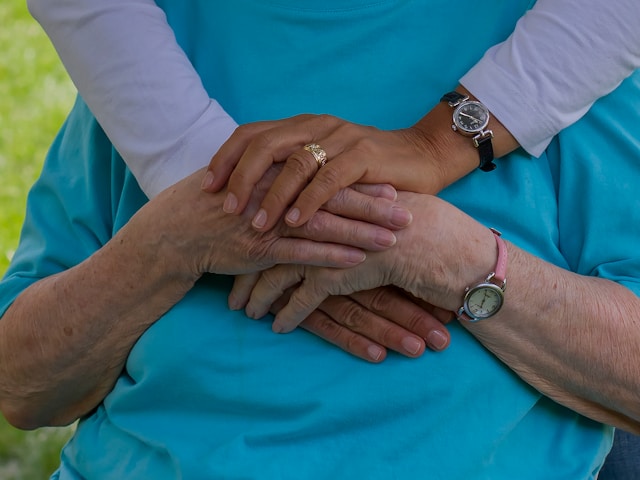November is National Family Caregivers Month, and to mark the occasion, Bio.News sat down with the National Alliance for Caregiving (NAC) to discuss the crucial role of family caregivers in supporting families, communities, and the healthcare system, what challenges family caregivers face, and what can be done to ensure family caregivers have the resources they need to effectively care for the people they love.
As NAC explained in Caregiving in the US 2025, a new report on family caregiving released in July from NAC and AARP, 63 million American adults—almost one-quarter of the population—provide ongoing care to for an adult or a child with a complex medical condition or a disability, representing a dramatic 45 percent increase since 2015.
‘The backbone of our economy’
“Caregiving is disease-agnostic,” explains Kim Cantor, Chief External Affairs Officer at the NAC, “Behind every diagnosis is a family caregiver absorbing the silent cost of care, such as handling logistics, coordinating medical needs, and navigating complex systems. Their work is indispensable, yet too often overlooked in discussions about the true cost of care.”
In fact, family caregivers are essential care partners; 63 million family caregivers provide care for those with complex medical conditions or disabilities, often assisting with daily living activities such as administering medicine, helping with hygiene, dressing, feeding, and mobility. They also manage finances, file insurance claims, coordinate care, communicate with healthcare providers, provide transportation, and handle household responsibilities. Up to 55% of caregivers also take on medical or nursing tasks such as administering injections or managing catheters.
“Caregivers are the backbone of our economy,” explains Cantor. “In 2021, family caregivers contributed $600 billion worth of unpaid care in this country, which underscores their valuable role.” Understanding, recognizing, and supporting family caregivers in the U.S. is key to holistic healthcare policy at the federal and state levels.
The hidden weights of caregiving
Nearly one-third of the 63 million caregivers in the U.S. are part of the “sandwich” generation, simultaneously caring for an adult and a child under 18 at home. About half of all family caregivers in this dual role are under the age of 50, and many juggle employment with their caregiving responsibilities. In fact, 70 percent of working-age caregivers are employed while providing care.
The time spent in the caregiving role is not inconsequential, and nationwide, caregiving has become longer-term and more intensive. “Thirty percent of caregivers have provided care for five or more years, a significant increase from 2020. On average, caregivers spend 27 hours per week providing care, and 24 percent provide 40 or more hours per week” according to Caregiving in the US.
Nearly half of caregivers experience negative financial impacts due to their care responsibilities, explained Cantor.
“As a native American, one of the values that is instilled in us is to care for your elders,” explained Zuzette, a caregiver who, along with her sister TeriLynne, found herself caring for both her elderly father, who was diagnosed with dementia, as well as her own children, two of whom have chronic conditions. As they shared their story with NAC, Zuzette explained, “I started to get sick and stressed,” leading their doctor to recommend better self-care.
Additionally, TeriLynne, found herself getting written up more at work as a result of her caregiving duties. Though the sisters supported each other, there was still the undeniable reality that they needed more help.
Their story is not uncommon. As Cantor noted, it is a clear sign that policy has not kept up with the needs and demands of family caregivers. That is why NAC advocates for policies that champion family caregivers’ health and wellness, promotes caregiver financial well-being, and foster caregiver friendly communities that truly recognize and support their ability to provide care.
At the same time, NAC calls for “lowering the out-of-pocket costs associated with complex care by eliminating barriers such as copay accumulators, copay maximizers, and restrictions on alternative funding programs that prevent caregivers from accessing needed treatments.”
Caregiving takes a toll
And the impacts on caregivers are by no means restricted to economics.
“This process really took a huge toll,” shared Abena. “I wasn’t sleeping. I wasn’t going to the doctor myself. I wasn’t taking time for any breaks to restore myself. I wasn’t taking care of my relationship with my husband. I was moved out of my role at work. I can’t tell you the number of cavities that I’ve gotten through this process because even something as basic as making sure to brush my own teeth came last after everything, everybody else.”
As Caregiving in the US 2025 details, “one in five family caregivers rate their health as fair or poor, and nearly a quarter say they have difficulty caring for themselves.”
“Many caregivers experience high emotional stress (64 percent) and physical strain (45 percent),” the data show. “Feelings of isolation have increased since 2020, with 24 percent of caregivers saying they feel alone. Notably, caregivers who report having no choice in becoming a caregiver—56 percent of all respondents—experience significantly worse mental health outcomes, more days of physical strain, and lower perceived purpose in caregiving.”
Despite this strain, the rewards of caregiving can be unparalleled. “We want people to know that caregiving is hard work, and it can be extraordinarily isolating, scary, frustrating, and exhausting, but it’s also purposeful and joyful too,” says Cantor.
That’s why NAC advocates for policies that protect and expand access to comprehensive care for family caregivers navigating complex care for themselves and their care partners. This includes greater access to care navigation, caregiver training services, and access to telehealth.
Networks of care
Caregiving, while rewarding, can feel extremely isolating. It truly takes a village. This is why developing stronger systems of community care is so important.
“Honestly, the people that helped me the most were other brain tumor wives who spoke to me about their struggles,” said Abena. “Even a 15-minute conversation with someone who’s lived that experience might bring up things that you didn’t even know were possible.”
Unfortunately, access to community services has become increasingly difficult.
“Since 2015, more family caregivers have had difficulty finding affordable services for their care recipient, with 28 percent having difficulty finding services like delivered meals, transportation, or in-home health services,” as noted in Caregiving in the US. This challenge is even more difficult in rural areas, with 34 percent of caregivers citing difficulty, as compared to 27 percent of urban caregivers and 26 percent of suburban caregivers.
Additionally, the report found that only 14% of caregivers report having used respite services – services that provide temporary relief for primary caregivers by offering short-term care for their loved ones.
That is why the NAC advocates for community-level policies and programs that strengthen support networks for caregivers.
Never alone
At some point, nearly everyone will be a caregiver, need a caregiver, or both. This is why awareness months like November’s National Family Caregivers Month are so important. To drive that point home, the NAC’s call to action for the month is Plug-In to Care: “For caregivers to connect to the resources and systems that sustain them. For individuals and communities to support caregivers in daily life. For policymakers to ensure innovations in care are not only supported, but also funded and accessible for all.”
This call to action is key because of the unanswered question when it comes to caregiving: Who cares for the caregiver?
“It was just very eye-opening to us, all of a sudden, to realize that there were people always advocating and fighting for voices to be heard,” shared Rick, a caregiver to wife Suzzane. “And the National Alliance for Caregiving was one of them. They are there every day making sure that our stories are being told.”
If you want to learn more, visit the NAC at https://www.caregiving.org/ to get access to their report, and for additional resources, policy priorities, as well as to get involved.




